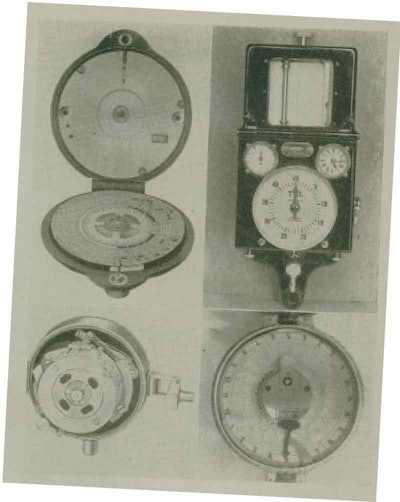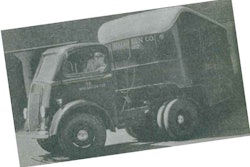Using technology to score drivers started the moment the automobile replaced the horse-drawn wagon. By the early 1920s many fleets were using mechanical devices to record time and miles and compare drivers’ performance with route standards.
Transcribing data from these early devices was time consuming and the information was limited.
 By the end of the 1920s, recorders were capturing vehicle speed, mileage, stops and starts on paper dial charts.
By the end of the 1920s, recorders were capturing vehicle speed, mileage, stops and starts on paper dial charts.By the late 1990s, Electronic engines and telematics systems had dramatically expanded the breadth and depth of scoring capabilities. Modern technology now gives instantaneous and time-based averages for driver performance in areas like fuel efficiency, on-time performance, hard braking, speeding and much more.
The next wave of driver scoring technology appears to be video-based risk management systems. Besides using engine, GPS and sensory data, these systems show the conditions inside and outside the cab that caused a risky event to occur. With the additional content, fleet managers can quickly determine the root cause of poor performance and coach drivers on how to improve.
Some vendors that offer these systems have their own analysts review the video to identify items like drivers not wearing their seat belts or being distracted. These observations are compiled, analyzed and presented along with other event data in an easy-to-understand scoring system that identifies leading risk indicators.
Custom scoring
Amid all the data available to score drivers and create fair incentive programs, scores that likely concern carriers the most fall under the Compliance, Safety, Accountability program.
Food and retail-products wholesaler and distributor Bozzuto’s Inc., based in Connecticut, installed the SmartDrive system throughout its fleet in 2011. The company hoped to correct driver errors that led to moving violations that were hurting the fleet’s Unsafe Driving Behavioral Analysis and Safety Improvement Category score.
In nearly three years since implementation, the company’s Unsafe Driving BASIC ranking has fallen nearly 100 percentage points to among the best such scores in its peer group.

The tool, Custom Coaching and Scoring, lets fleets tune the program to their individual risk priorities and safety policies. SmartDrive has identified best practices by industry segment, specific operating environment and vehicle type. Using this as a starting point, its safety experts will then customize the scoring to fit the unique business requirements for its customers, says Adam Kahn, senior director of marketing.
For instance, a motor carrier that hauls high value freight may work for a shipper that is adamant that drivers are not distracted by mobile phones. The carrier could raise the severity weighting of this observation to bring it to the forefront of its driver risk scores.
SmartDrive has additional reporting tools to rank drivers by locations and groups of drivers. It also has the ability to score the effectiveness of driver coaching, he says.
Lytx offers an in-vehicle device called DriveCam that captures irregular events, which are reviewed and scored before being passed to the fleet for use in coaching drivers. Most of the data comes not from video recordings, but from the ECM, GPS and other sources, though the video is critical in interpreting and scoring the other data.
Working with scores
Lytx has designed its online portal to weave a very complex stream of data into simple and straightforward visual workflow tools to assess and manage driver risk.
 A driver trainer for Con-way monitors the Lytx DriveCam web portal to see if any incidents need to be discussed with drivers.
A driver trainer for Con-way monitors the Lytx DriveCam web portal to see if any incidents need to be discussed with drivers.The latest portal, version 3.0, has new role-based user dashboards with customized key indicators, including a stack ranking of drivers according to their accident probability. Individual events are also ranked and displayed by severity in a “to do” list tied to a workflow that is designed to improve “coaching moments” with drivers.
Recently, the company announced that customers will have the option of rewarding high-performing drivers by turning off the in-cab camera, while leaving the forward-view camera operational. The safest drivers rarely, if ever, trigger the in-cab camera by exhibiting unsafe behavior such as hard braking. But most drivers prefer driving without the possibility of it coming on, says Chris Silver, marketing director of Lytx.
Considering the amount and complexity of driver performance data, modern business tools help simplify it with scoring mechanisms that are fair and clearly understood by managers and drivers.
To see examples of how fleets are using technology to create effective driver scoring and incentive programs, click on one or more of the links below:
1. A how-to guide for paying drivers for performance>>
2. The science of scoring drivers>>
3. Automating driver feedback >>














